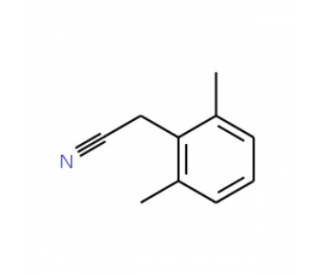详细说明
Purity
>95%, by SDS-PAGE visualized with Silver Staining and quantitative densitometry by Coomassie® Blue Staining.
Endotoxin Level
<1.0 EU per 1 μg of the protein by the LAL method.
Activity
Measured by its ability to cleave the fluorogenic peptide substrate, Leu-AMC. The specific activity is >60 pmol/min/µg, as measured under the described conditions. See Activity Assay Protocol on .
Source
Mouse myeloma cell line, NS0-derived Ala37-Met941, with a C-terminal 10-His tag
Accession #
N-terminal Sequence
AnalysisAla37
Predicted Molecular Mass
105 kDa
SDS-PAGE
108 kDa, reducing conditions
2334-ZN |
| |
Formulation Supplied as a 0.2 μm filtered solution in Tris and NaCl. | ||
Shipping The product is shipped with dry ice or equivalent. Upon receipt, store it immediately at the temperature recommended below. | ||
Stability & Storage: Use a manual defrost freezer and avoid repeated freeze-thaw cycles.
|
Assay Procedure
Materials
Assay Buffer: 25 mM Tris, pH 8.0
Recombinant Human Aminopeptidase PILS/ARTS1 (rhARTS1) (Catalog # 2334-ZN)
Substrate: Leu-AMC (Bachem, Catalog # I-1240)
F16 Black Maxisorp Plate (Nunc, Catalog # 475515)
Fluorescent Plate Reader (Model: SpectraMax Gemini EM by Molecular Devices) or equivalent
Dilute rhARTS1 to 2 µg/mL in Assay Buffer.
Dilute Substrate to 200 µM in Assay Buffer.
Load 50 µL of 2 µg/mL rhARTS1 into the plate, and start the reaction by adding 50 µL of 200 µM Substrate. Include a Substrate Blank containing Assay Buffer and Substrate.
Read at excitation and emission wavelengths of 380 nm and 460 nm (respectively), in kinetic mode for 5 minutes.
Calculate specific activity:
Specific Activity (pmol/min/µg) = | Adjusted Vmax* (RFU/min) x Conversion Factor** (pmol/RFU) |
| amount of enzyme (µg) |
*Adjusted for Substrate Blank
**Derived using calibration standard 7-amino, 4-Methyl Coumarin (Sigma, Catalog # A-9891).
Per Well:
rhARTS1: 0.1 µg
Substrate: 100 µM
Background: Aminopeptidase PILS/ARTS1
The name of Aminopetidase PILS (Puromycin-Insensitive Leucyl-Specific) describes the two basic properties of this zinc metalloprotease in vitro (1). Also known as ALAP (Adipocyte-derived Leucin AminoPeptidase), type 1 tumor necrosis factor receptor (TNFR) shedding aminopeptidase regulator and ER aminopeptidase ERAP1 or ERAAP, it is encoded by the ARTS1 gene (2-4). Aminopeptidase PILS has been identified to regulate antigen presentation, promote TNFR1 ectodomain shedding and associate with hypertension (2-5).
References:
Schomburg, L. (2004) in Handbook of Proteolytic Enzymes (ed. Barrett, et al.) pp. 311, Academic Press, San Diego.
Cui, X. et al. (2002) J. Clin. Invest. 110:515.
York, I.A. et al. (2002) Nat. Immunol. 3:1177.
Serwold, T. et al. (2002) Nature 419:480.
Yamamoto, N. et al. (2002) Hum. Mutat. 19:251.
Long Name:
Aminopeptidase Puromycin-insensitive Leucyl-specific
Entrez Gene IDs:
51752 (Human); 80898 (Mouse)
Alternate Names:
Adipocyte-derived leucine aminopeptidase; A-LAP; A-LAPALAP; Aminopeptidase PILS; ARTS1; ARTS1aminopeptidase regulator of TNFR1 shedding; ARTS-1PILSAP; EC 3.4.11; EC 3.4.11.-; EC 3.4.11.1; endoplasmic reticulum aminopeptidase 1; endoplasmic reticulum aminopeptidase associated with antigen processing; ERAAP1; ERAP1; KIAA0525APPILS; PILS-AP; PILS-APERAAP; Puromycin-insensitive leucyl-specific aminopeptidase; Type 1 tumor necrosis factor receptor shedding aminopeptidase regulator











 粤公网安备44196802000105号
粤公网安备44196802000105号